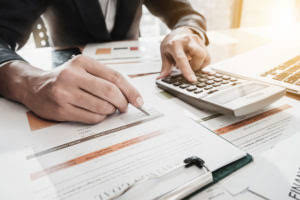
By Kimberly Loocke, Eric Wall, Julia Riechert, and Richard D. Harroch
In the wake of the COVID-19 pandemic and shelter-in-place orders, businesses are considering ways to assist employees and other workers who are financially burdened by the crisis. One simple and tax-favorable action is to make disaster relief assistance payments under Section 139 of the Internal Revenue Code.
Under Section 139, payments for personal, family, living, or funeral expenses incurred as a result of the COVID-19 pandemic are both tax-free to the individual recipients and tax-deductible expenses for the business. Payments are free of IRS reporting requirements and a plan can be quickly adopted with minimal expense.
Businesses large and small can take advantage of this favorable tax treatment to help their workers during these challenging times. With careful planning, even businesses that have had to reduce salaries or adopt furloughs may be able to implement such a financial assistance plan to help their hardest hit workers from the COVID-19 pandemic.
Section 139 payments are highly tax favorable
Section 139 payments are excluded from the recipient’s federal gross income and not otherwise treated as compensation or income from self-employment, and are deductible by the business for federal income tax purposes (except to the extent self-employed individuals and other owner-employees receive a benefit as a recipient of a qualified disaster relief payment).
A broad variety of expenses may be covered by Section 139
Qualified disaster relief payments include any amount paid to or for the benefit of an individual to reimburse or pay reasonable and necessary personal, family, living. or funeral expenses incurred as a result of a qualified disaster. Qualifying payments may be structured as a reimbursement of actual expenses incurred by the recipient or as payments determined by the business to be in proportion to the recipient’s reasonable and necessary expenses incurred.
There is no dollar cap on qualifying payments, but they cannot be (1) made for nonessential, luxury or decorative items or services; (2) made for expenses which are otherwise compensated for by insurance or other sources; or (3) intended to replace lost wages or income.
Section 139 payments have low administrative and compliance requirements
Payments made pursuant to Section 139 are not required to be reported on a Form W-2 or Form 1099. These payments are not subject to any federal wage or other employment tax withholding obligations. Businesses should reach out to their tax advisors to confirm any state tax and withholding obligations.
A formal plan or policy to govern Section 139 payments is not required and a business is not required to obtain proof of the actual expenses incurred by the recipients as long as the business reasonably expects the amounts to be commensurate with the amounts of the individual’s unreimbursed reasonable and necessary expenses incurred as a result of the COVID-19 pandemic.
However, we recommend adopting a plan that describes the parameters and eligibility requirements for payments under the plan. Best practices also include obtaining an affirmative statement from the recipient that the funds received are necessary for expenses associated with COVID-19 and that such expenses will not be reimbursed by insurance.
Sample Employee Financial Assistance Plan
A variety of different approaches may be used to provide tax-favored financial assistance. Here is a sample Employee Financial Assistance Plan for a policy that provides reimbursements for documented COVID-19 expenses. This sample includes the recommended practices described above and should be tailored to your business’s particular situation:
COVID-19 Reimbursement Policy
This temporary policy establishes guidelines for Company reimbursements of employee expenses incurred due to the COVID-19 pandemic in accordance with Section 139 of the Internal Revenue Code. Subject to the conditions below, all Company employees who have incurred reasonable and necessary Covered Expenses within the Covered Period as a result of the COVID-19 pandemic may receive reimbursements of such expenses of up to $____ per employee.
Covered Expenses. “Covered Expenses” are expenses that are reasonable and necessary personal, family, living, or funeral expenses incurred as a direct result of the COVID-19 pandemic, reimbursement for which qualify as qualified disaster relief payments under Section 139 of the Internal Revenue Code, and which are not otherwise compensated for by insurance or otherwise. The Company will not reimburse costs of nonessential, luxury, or decorative items or services or make payments that are considered by the Company as replacement for lost wages, sick leave, or other income. Examples of expenses resulting from the COVID-19 pandemic that the Company will consider for reimbursement include:
Medical expenses not compensated for by insurance incurred as a result of a COVID-19 diagnosis or suspected COVID-19 infection
Precautionary health expenses, including hand sanitizer, face masks, gloves, and disinfectant cleaning supplies
Increased costs related to telecommuting due the COVID-19 pandemic, including initial and ongoing home office expenses, which are not otherwise reimbursed or covered by the Company
Increased travel and commuting costs incurred as a result of the necessity to use alternative travel and commuting arrangements due to the COVID-19 pandemic
Increased costs of child-care and educational expenses for immediate family members due to the COVID-19 pandemic
Reimbursement Procedures. Reimbursement requests must be submitted to ___________________ within 60 days of the date incurred, along with appropriate supporting documentation (e.g., a copy of receipts and a detailed itemized list of expenses incurred) and a certification that the expenses were reasonable and necessary expenses incurred as a result of the COVID-19 pandemic and are being requested in compliance with the conditions of this policy. Expenses for items or services the Company deems in its own discretion as nonessential, luxury, or decorative, or not incurred as a result of the COVID-19 pandemic will not be reimbursed. The Company will determine whether to reimburse for submitted expenses in its sole discretion. The employee must return to the Company any amounts received in excess of the substantiated expenses within 60 days from the date of reimbursement.
Payment Details. Reimbursement payments will be made as part the Company’s regularly scheduled payroll after receipt of the required documentation and completion of the Company’s approval process. The Company intends to treat qualifying reimbursements as non-taxable for federal employment and income tax purposes under Section 139 of the Internal Revenue Code, and the reimbursements will not otherwise be treated as compensation for purposes of the Company’s other benefit and incentive programs.
Covered Period. The “Covered Period” for this policy is March 13, 2020, through the date at which the COVID-19 pandemic is no longer considered a federally declared disaster or when the Company ends the policy, in its sole discretion. The Company reserves the right to modify or cancel this policy at any time.
COVID-19 Reimbursement
Employee Expense Certification
Employee Name: _____________________________________________
Requested Reimbursement Amount: ________________________________
Expense Documentation Attached: YES
I certify that the requested reimbursement amount is for reasonable and necessary expenses incurred by me or my immediate family on or after March 13, 2020, as a direct result of the COVID-19 pandemic and is being requested in good faith pursuant to the Company’s COVID-19 Reimbursement Policy. I also certify the requested reimbursement amount is not intended to compensate for lost wages, sick leave, or income, and I did not and will not receive reimbursement or payment from any other source for the claimed expenses.
Signature: ____________________________________
Related Articles:
Financial Help for Freelancers and Independent Contractors Affected by the Coronavirus Crisis
Where’s the Money? The Top 10 Frequently Asked Questions About CARES Act Loans
Small Business Relief: COVID-19 Resources for Startups
Newly Available CARES Act Loans: 10 Things Small Businesses Need to Know
About the Authors:
Kimberly Loocke is an experienced tax attorney in the San Francisco office of Orrick, Herrington & Sutcliffe. Kimberly focuses her practice on the tax aspects of corporate and real estate transactions, sales and use taxation, as well as tax controversy and operational matters. She has been recognized as a Rising Star by Super Lawyers from 2015-2019. Kimberly holds a Certified Public Accountant license and worked as a senior tax associate for Deloitte Tax, LLP. She can be reached through Orrick’s website.
Eric Wall is a partner in the San Francisco office of Orrick, Herrington & Sutcliffe, and is a member of its Tax Group. His practice encompasses a wide variety of federal and state tax issues, including domestic and cross-border mergers and acquisitions, executive compensation matters, real estate matters, and taxation of pass-through entities. He can be contacted through Orrick’s website.
Julia Riechert is an employment law partner and trial lawyer in the Silicon Valley office of Orrick, Herrington & Sutcliffe. She helps companies navigate and resolve challenging workplace issues and has extensive expertise in litigating and defeating employment claims. She can be reached through Orrick’s website.
Richard D. Harroch is a Managing Director and Global Head of M&A at VantagePoint Capital Partners, a venture capital fund in the San Francisco area. His focus is on internet, digital media, and software companies, and he was the founder of several internet companies. His articles have appeared online in Forbes, Fortune, MSN, Yahoo, FoxBusiness, and AllBusiness.com. Richard is the author of several books on startups and entrepreneurship as well as the co-author of Poker for Dummies and a Wall Street Journal-bestselling book on small business. He is the co-author of the 1,500-page book “Mergers and Acquisitions of Privately Held Companies: Analysis, Forms and Agreements,” published by Bloomberg. He was also a corporate and M&A partner at the Orrick law firm, with experience in startups, mergers and acquisitions, and venture capital. He has been involved in over 200 M&A transactions and 250 startup financings. He can be reached through LinkedIn.
The post How Businesses Can Provide Tax-Free Financial Assistance to Employees appeared first on AllBusiness.com. Click for more information about Richard Harroch. Copyright 2020 by AllBusiness.com. All rights reserved. The content and images contained in this RSS feed may only be used through an RSS reader and may not be reproduced on another website without the express written permission of the owner of AllBusiness.com.
Original Source: allbusiness.com
Content

Select the version you need from the drop-down list below. Highest customer reviews on one of the most highly-trusted product review platforms. Simplify the entire SSN preparation process with this easy-to-understand video backed up by superior experience. Discover how to spend less time on better template completion on the web. Certify your PDF form electronically and specify the date.
You must have lived in a building in which property taxes were assessed or you made payments to a local government instead of property taxes. TaxFormFinder has an additional 95 Minnesota income tax forms that you may need, plus all federal income tax forms.
Mar 13, 2015 — return to claim a property tax refund using Form M1PR, tax software or… Refunds will be mailed in late September or early October if received by the August 15 deadline. Otherwise, you can expect your refund within 60 days of when filed.
Refund claims are filed using Minnesota Department of Revenue Schedule M1PR. The homestead credit refund is a state-paid refund that provides tax relief to homeowners whose. Property taxes are high relative to their incomes. The program was previously known as the. Homeowner’s property tax refund program, or PTR, and sometimes popularly called the circuit. Is my MN property tax refund considered “state or local income”? That’s not taxable income and is not reported on your federal tax return.
That’s a state income tax credit. It is not a “refund” of taxes paid. Renters whose income exceeds $61,320 are not eligible for refunds.

Generally, you have three years from the original tax return deadline to file the return and claim your refund. After three years, the refund will go to the government, specifically the U.S. If you file a complete and accurate paper tax return, your refund should be issued in about six to eight weeks from the date IRS receives your return. If you file your return https://turbo-tax.org/a electronically, your refund should be issued in less than three weeks, even faster when you choose direct deposit. TopTenReviews wrote “there is such an extensive range of documents covering so many topics that it is unlikely you would need to look anywhere else”. We last updated Minnesota Form M1PR in January 2022 from the Minnesota Department of Revenue.
You can file Form M1PR with your Minnesota state tax return to claim this tax credit. For refund claims filed in 2021, based on rent paid in 2020 and 2020 household income, the maximum refund is $2,210. Renters whose income exceeds $62,960 are not eligible for refunds.
See the Form M1PR instructions for filing details. Get your documentation accomplished. The IRS and most states collect a personal income tax, which is paid throughout the year via tax withholding or estimated income tax payments. It appears you don’t have a PDF plugin for this browser. Please use form m1pr 2013 the link below to download 2021-minnesota-form-m1pr.pdf, and you can print it directly from your computer. If the due date falls on a weekend or legal holiday, your return is due by the next business day. You may file Form M1PR and claim a refund for up to one year after the original due date.
 Westend61/Getty Images
Westend61/Getty Images
My savings strategy is simple: I transfer money out of my checking account into an online savings account with a higher rate of return — and then pretend it doesn’t exist.
I learned this strategy when I worked a full-time job and taxes, insurance, and retirement savings would come out of my paycheck before I even saw the money.
Now, I’ve been able to fund trips abroad, cover expensive car repairs, and build a robust emergency fund by pretending I don’t have any money.
Read more personal finance coverage.
To save money, I act like I don’t have any.
That may sound odd. Let me explain. First, I actually like putting away money. As a child, I had my own little bank in the shape of a mailbox. I remember it being a gift from my grandfather, who’d worked for the United States Postal Service. I’d slide coins into the shiny mailbox and grew up learning that it was important to have my own money so I could take care of myself.See the rest of the story at Business Insider
NOW WATCH: A cleaning expert reveals her 3-step method for cleaning your entire home quickly
See Also:
Last year I was $30,000 in debt, but a 2-part strategy helped me pay it off and put $28,000 in my savings accountI worked as a vet tech for years, and I don’t think pet insurance is worth the cost. Instead, I have a simple strategy for protecting my 4 pets.6 signs you’re using the wrong savings account
Original Source: feedproxy.google.com